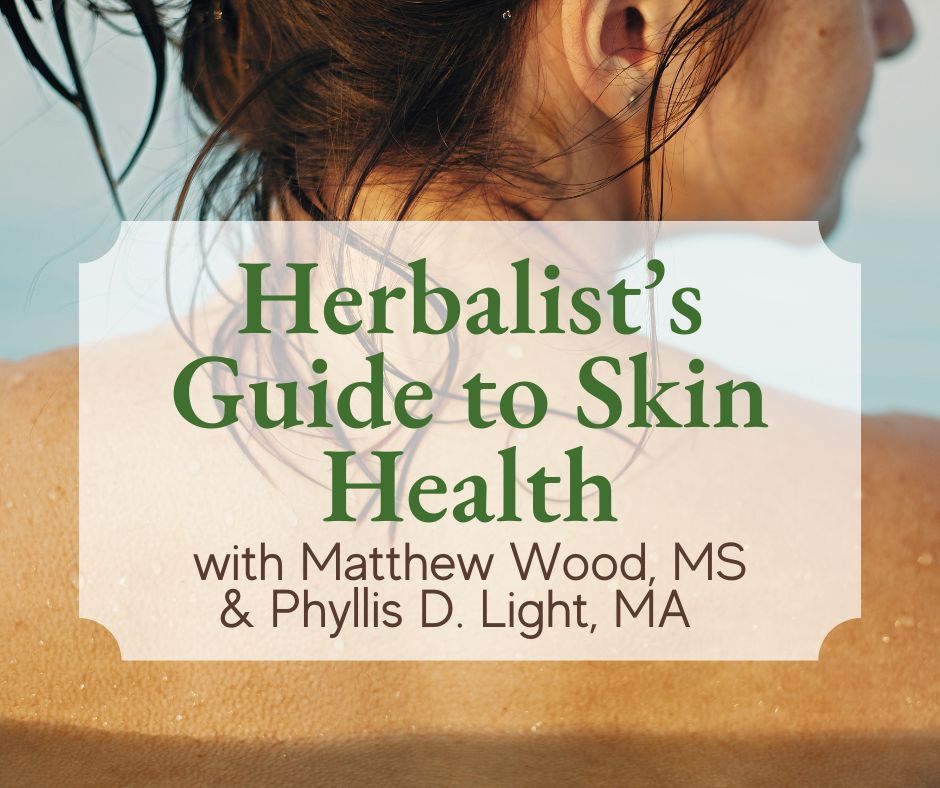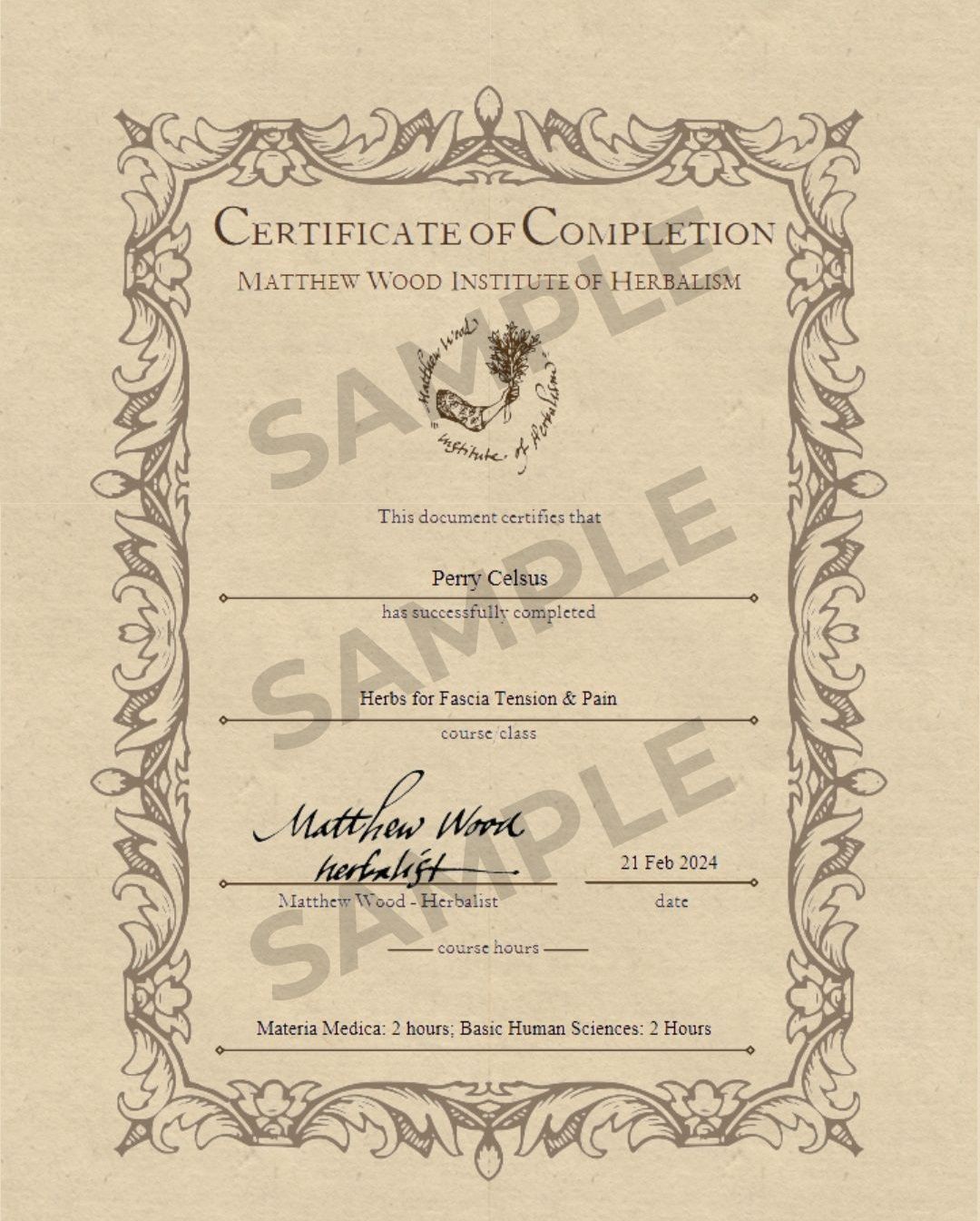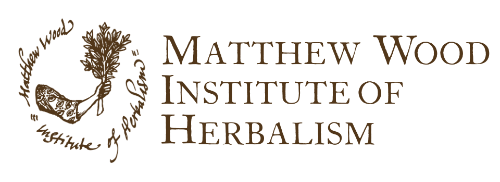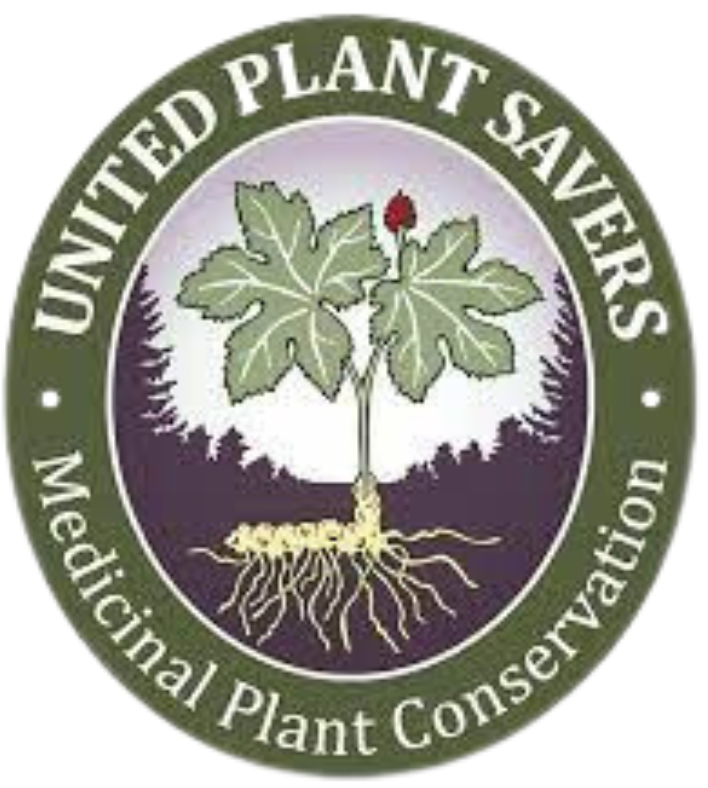
Herbalist’s Guide to Skin Health: Anatomy, Pathology, Beauty, Assessment & Remedies
Holistic - Comprehensive - Practical
Help Your Skin Say “Healthy”
The skin is our first line of defense and our barrier against the world. It is intimately connected to temperature and water regulation, which determine overall health. The skin works in harmony with the channels of elimination and detoxification. It is the ambassador of the inner body and we want to keep it—and allied structures (scalp, hair, nails)—in grand health. The skin is also a carrier of messages and symptoms to and from the body that we want to be able to read with attention and skill. Skin and hair care constitute a massive market in natural and herbal products and an area for the practitioner to develop skill and abilities that are in great demand. Lotions, salves, and balms are always popular.
Includes
Support Materials
Course Slides
(downloadable)
Support Materials
10 Documents
(by Matthew Wood, Phyllis D. Light & Tara Baklund)
Video
9 hours of teaching
Certificate
Certificate included
(see more below)
This is for you if you...
Upon completion, you will...
Teachers
Matthew Wood, MS
Matthew Wood has been a practicing herbalist for over forty years. He is an internationally known teacher and author with more than ten books to his credit. Matthew has an MSc in herbal medicine from the Scottish School of Herbal Medicine (accredited, U. of Wales). He lives in the Midwest.
Phyllis D. Light, MA
As a 4th generation herbalist, Phyllis started with lessons from her grandmother who taught from her Creek/Cherokee heritage. Phyllis has studied and worked with herbs, foods, and other healing techniques for 30+ years. She is the author of Southern Folk Medicine and co-author of Traditional Western Herbalism Pulse Evaluation.
Certificate Included

-
How to Get a Certificate
- Complete course materials
- Pass the test with a grade of 70% or better
- Save or print your certificate!
Available with subscription and individual course purchases.
-
Accreditation hours
This course is a total of 11 accredited hours
- 3.2 hours Clincal Experience
- 2.825 hours Materia Medica
- 3.025 hours Basic Human Sciences
- 1.2 hours History, Philosophy, and Therapeutic Paradigms and Applications (Including Energetics) of Various Systems of Herbal Medicine
- 0.75 hours Pharmacy, Pharmacognosy, and Dispensing
*Please check with your accrediting agency whether they will accept accredited hours or certificates from the Matthew Wood Institute of Herbalism
Write your awesome label here.
Herbalist’s Guide to Skin Health: Anatomy, Pathology, Beauty, Assessment & Remedies
Learn skin anatomy, solve common issues, and boost beauty with natural solutions.
Looking For A DEEPER JOURNEY INTO HERBALISM?

